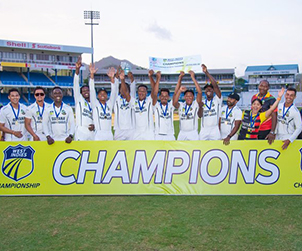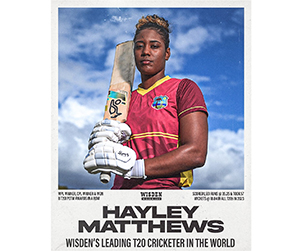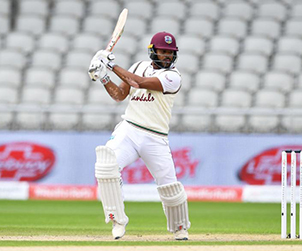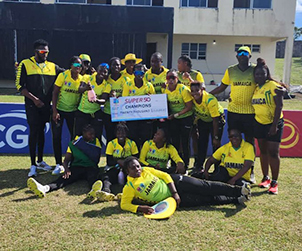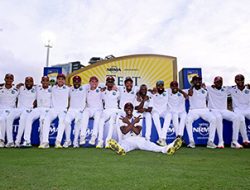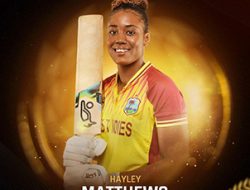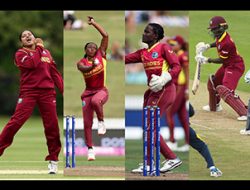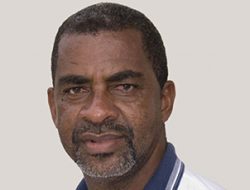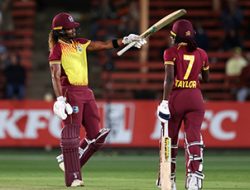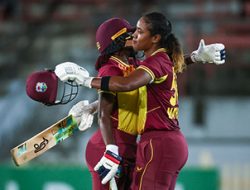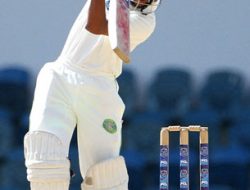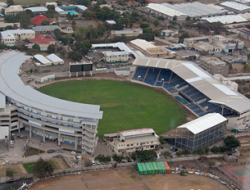The following is Part I of an article by columnist Tony Becca on great performances at Sabina Park. The venue will host its 50th Test this weekend. Part II will be published tomorrow.
The late, great English cricket writer Sir Neville Cardus, thinking that England’s Herbert Sutcliffe was about to hang up his bat at the end of the game, wrote during the fifth Test against Australia at The Oval in 1926 that “The Oval is not usually a beautiful place, but in the evening’s slanting sunshine it was like a gracious home in which Hobbs was saying farewell to Sutcliffe, his armour-bearer for many years.”
Had Cardus been to the West Indies, any time between 1930 and now, and he had been honest enough, he would have written similar lines about Sabina Park.
“Sabina”, as it is called, is not a beautiful place, at least not in comparison to the concrete and steel magnificence of Edgbaston or Old Trafford in England, to Delhi or to the Wankhede Stadium in India, to Adelaide or to the MCG in Australia, and to Newlands or to the Wanderers in South Africa, and certainly it cannot be compared to the graceful beauty of the Eden Gardens in India or to the serene almost reverence beauty of Lord’s in England.
Sabina Park, however, like the Oval in England, is home to many of cricket’s greatest deeds, performed by many of cricket’s greatest players, against many of cricket’s finest players, and on a pitch once so hard and shiny that it glistened at times in the day’s sunlight like a mirror.
Starting in 1930, Sabina Park has hosted 49 Test matches with the coming Test match, between the West Indies and Pakistan, making it number 50.
And despite the bottle-throwing problems of 1968, 1978, and 1989, and the abandoned Test of 1998, “Sabina” has served up some delightful and memorable cricket from England’s towering 849 in the first innings of the first Test in 1930 and the world’s first triple century, 325, by Andy Sandham, through to the six centuries served up in the 1953 battle between the West Indies, three, and India, three, to the seven centuries of 1955 between Australia, five in one the innings (the only time in the history of Test cricket), and the West Indies, two, to the West Indies surprising fight-back led by a splendid 137 not out by Roston Case to save the last Test match played against India in 2016.
MANY GREAT INNINGS
And in between, and apart from the many unforgettable contests, there have been some great innings by some of the world’s greatest batsmen.
Of the 94 centuries, including 13 double centuries, and two triple centuries, that have been scored there, and although I never saw any before 1953 and never saw Sandham’s 325, nor George Headley’s 223, nor his 270 not out, who can forget Garry Sobers’ world record 365 not out and Conrad Hunte’s 260 run out in their mammoth partnership of 446 for the second wicket against Pakistan in 1958, or his text book performance of 113 not out on a devilish pitch against England in 1968?
Other performances, whose technical skill and brilliance were fit for an audience of kings and queens, governor generals and prime ministers, included Frank Worrell’s 237 against India in 1953, Len Hutton’s masterpiece of 205 in 1954, Neil Harvey’s magnificent 204 in 1955, DilipSardesai’s 212 in 1971, Rohan Kanhai’s superb 158 not out against India in 1971, Lawrence Rowe’s brilliant 214 and 100 not out in 1972, Dennis Amiss’ wonderful 262 not out for England in 1974, David Gower’s impressive 154 not out in 1981, and Brain Lara’s amazing and match-winning 213 against Australia in 1999.
And of the great bowling returns per innings, those that will be remembered, and forever cherished, include the first five-wicket haul by O.C. “Tommy” Scott, 80.2 overs, 266 runs, and five wickets in 1930, Hines Johnson’s five for 41 and five for 55 against England in 1948, and Alfred Valentine’s five for 64 against Indian in 1953.
SUPERFINE
And after Valentine’s five came that of Esmond Kentish, whose bowling was “super fine” when he took five for 49 against England in 1954 in his second and last Test match, Trevor Bailey, seven for 34 in 1954, Wes Hall, seven for 69 against England in 1960, Hall, five for 49 against India in1962, Lester King, five for 46 against India in 1962, and John Snow, seven for 49 in 1968.
Michael Holding, five for 56 against England in 1981, Andy Roberts, five for 39 against India in 1983, Courtney Walsh, six for 62 against India in 1989, Corey Collymore, seven for 57 against Sri Lanka in 2003, Steve Harmison, seven for 12 in 2004, Collymore, seven for 78 against Pakistan in 2005, Anil Kumble, six for 78 in 2006, and Jerome Taylor, five for 11 against England in 2009.

